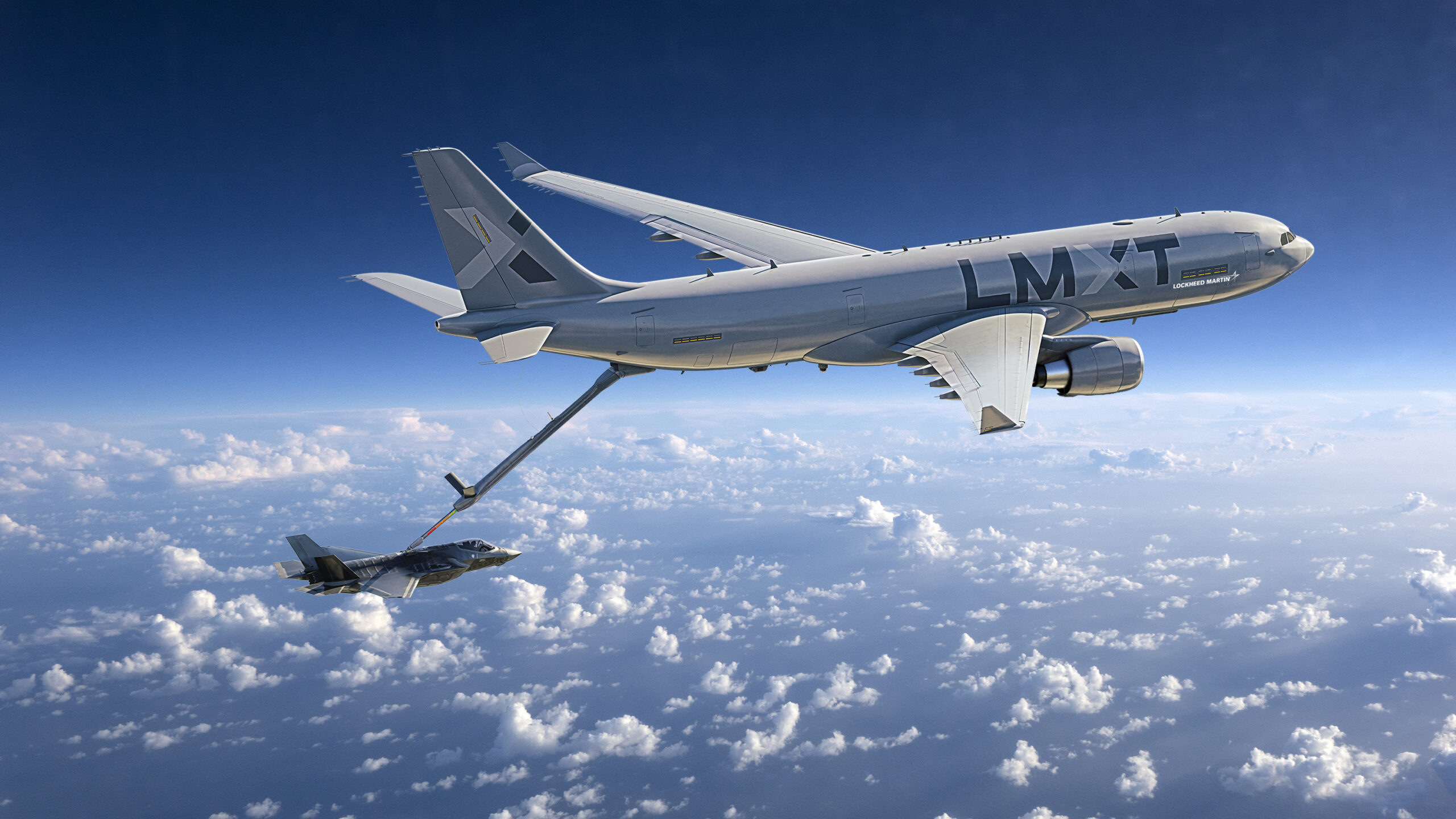
Concept art of an LMXT with GE CF6 engines refueling an F-35. (Lockheed Martin)
WASHINGTON — Lockheed Martin has selected GE Aerospace’s CF6-80E1 engine to power the aerospace giant’s LMXT tanker pitch for the Air Force, the two companies announced today.
“We have endeavored through our supply chain to make sure we were getting the absolute best bang for the buck, so to speak, and providing the best engine for the LMXT. We’re very happy to announce that competition is now complete, and we have selected an iconic United States company, General Electric, to provide the CF6-80E1 engine for the LMXT,” said Larry Gallogly, Lockheed’s campaign director for the LMXT, during a briefing with reporters this morning.
The selection of the CF6 draws to a close a year-long competition between GE and Rolls Royce, whose Trent 700 powerplant was reportedly also under consideration. A spokesperson for Rolls Royce did not immediately respond to a request for comment.
The engine selection comes as the Air Force weighs how to continue recapitalizing its aging fleet of KC-135 Stratotankers, whether through continued acquisition of the KC-46A or new purchases of the LMXT. In March, service acquisition chief Andrew Hunter announced officials were now leaning toward an interim tranche of 75 KC-46As, with the goal of fielding a new, next-gen tanker by the mid-2030s. But Lockheed still sees an opening in the Air Force’s optimism.
Lockheed Says NGAS Timeline Looks ‘Aggressive’
Gallogly said today that company officials believe the Air Force’s “aspirational goal” of fielding that new tanker — known as the Next Generation Air-refueling System (NGAS) — by the 2035 timeframe is “a very, very aggressive target for a full developmental program,” adding instead that the company sees NGAS arriving “somewhere between 2035 and 2040.”
Any slip in the NGAS timeline would be a boost to the LMXT’s business case as its tri-company team — Lockheed, Airbus and now GE — seeks to build out an industrial base to field the interim tanker. The logic goes that the longer Air Force has to replace more KC-135s before NGAS comes fully online, the more chance the LMXT can fill capability gaps. Gallogly estimated, for instance, that rather than the 75 KC-46s the Air Force currently envisions, “somewhere between” 75 and 150 tankers will actually be necessary.
“We are still in this competition, or drive for this competition [for the LMXT], because we think it will be more toward the 2040 timeframe before we have an operational NGAS aircraft,” he said. (While Gallogly said the LMXT will be “an enabler for NGAS,” the company’s pitch for that next-gen tanker is not yet clear.)
And though Gallogly declined to share what number of tankers would serve the LMXT’s business case for profitable production, he made clear that a lower number of needed tankers would be a constraining factor.
“We have looked at our business case, and we have messaged to the Air Force that the lower the number is, the more difficult it will be for our team of Lockheed, Airbus, and GE to remain competitive,” he said. “We will see what the Air Force comes out with and again, what the realistic timeline of NGAS is — and our team will work together to try to meet whatever that Air Force need is — but there obviously [are] breaking points for us from a business perspective.”
Gallogly also noted that Lockheed has pushed back on the Air Force’s estimate that the LMXT would not be delivered through the now-dead KC-Y program until 2034, a timeline that risked opening a gap between the end of currently planned KC-46A deliveries in 2029 and the arrival of NGAS in the mid-2030s.
RELATED: After years of KC-46 vision system troubles, Boeing thinks it’s finally cracked the code
“There was some difference between what the Air Force felt and what we thought we could do,” he said. Since Hunter’s announcement in March of the new tanker strategy, Gallogly said the company has held meetings with service officials “to provide our integrated master schedule of how we intend to build and deliver this aircraft to the Air Force, and have demonstrated in very certain terms that we can deliver LMXTs in 2030.”
Gallogly said the LMXT team expects requirements for the next tranche of tankers will be completed “later this month or early July,” whose release would be followed by a formal request for information.
“We think we’ve got a pretty good idea of what those requirements are going to be,” he said, adding that “we’re looking forward to actually seeing those requirements in writing.” After those requirements are completed, the service will finalize its acquisition strategy, and pointing to Air Force budget documents, Gallogly said he expects that point would be reached “by the end of this calendar year.”
Norway’s air defense priorities: Volume first, then long-range capabilities
“We need to increase spending in simple systems that we need a huge volume of that can, basically, counter very low-tech drones that could pose a threat,” Norway’s top officer told Breaking Defense, “so we don’t end up using the most sophisticated missile systems against something that is very cheap to buy.”


























